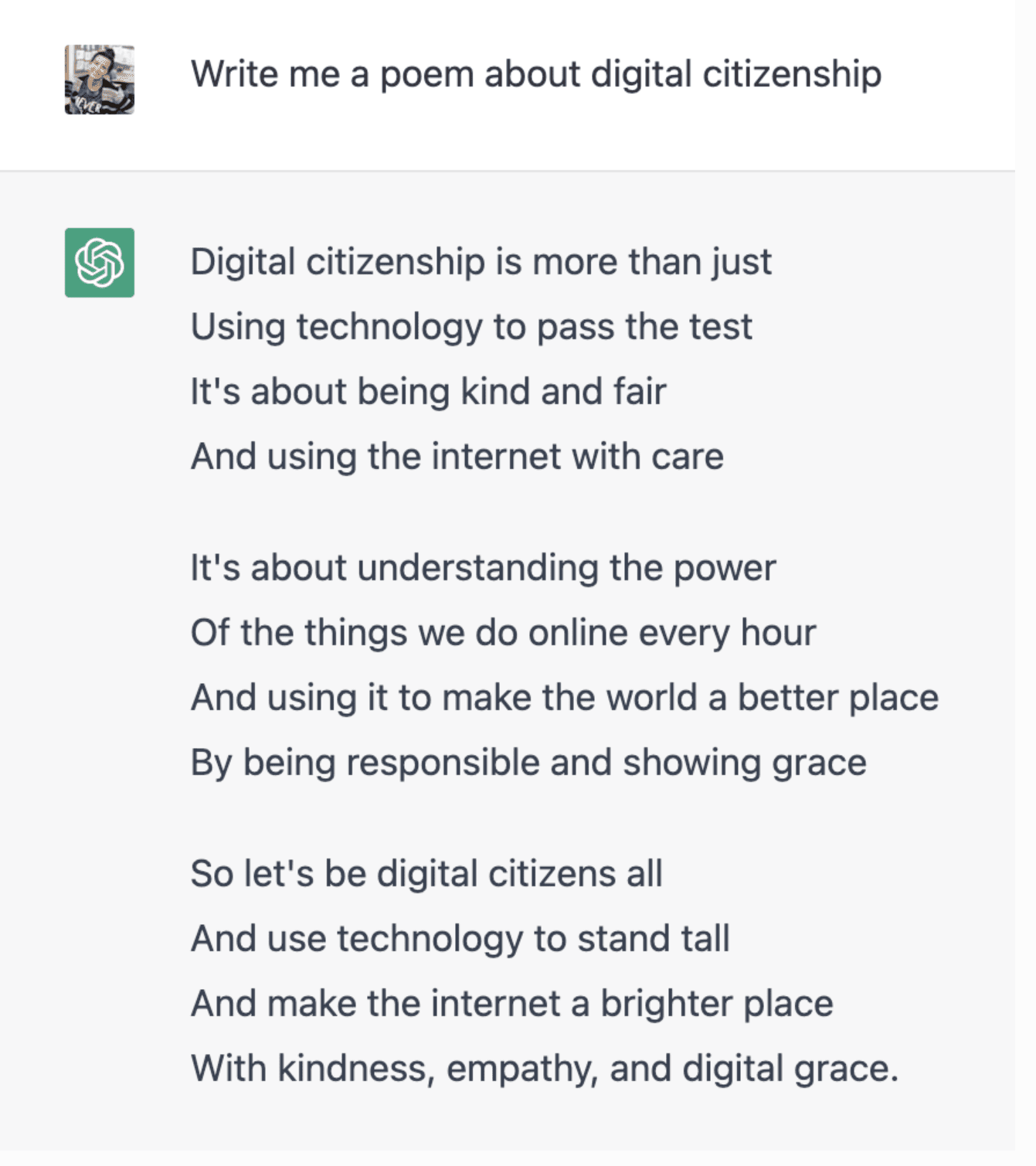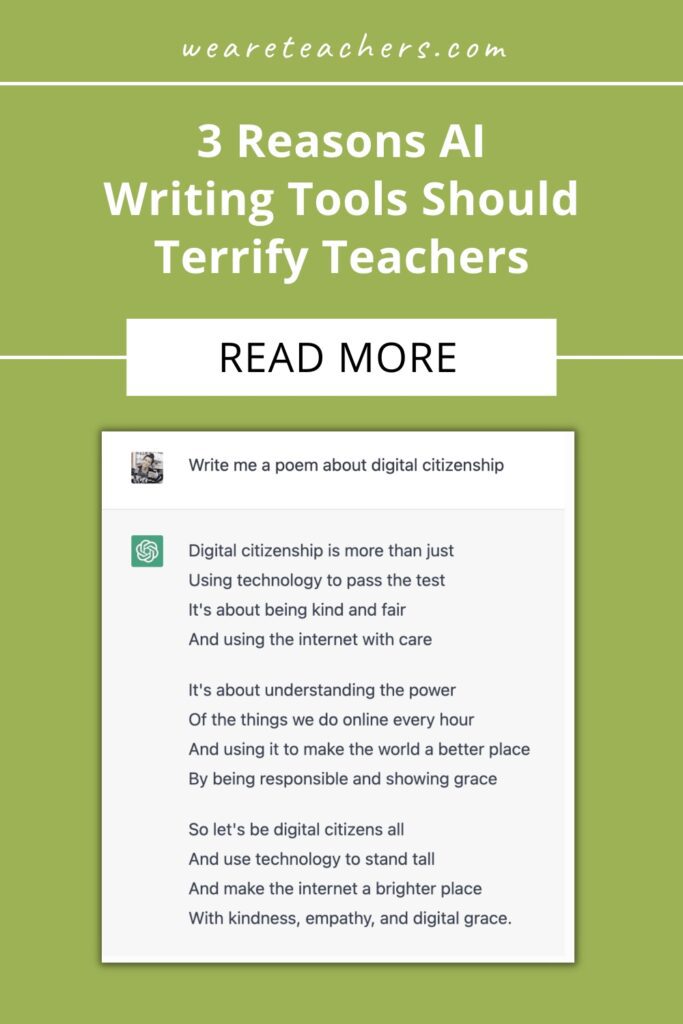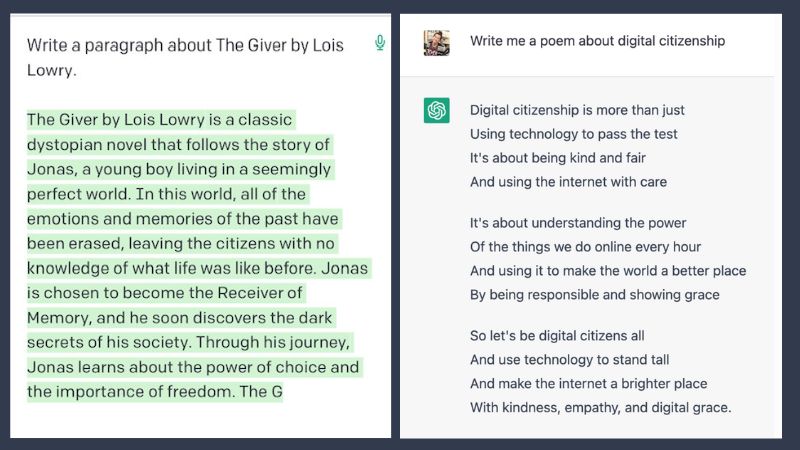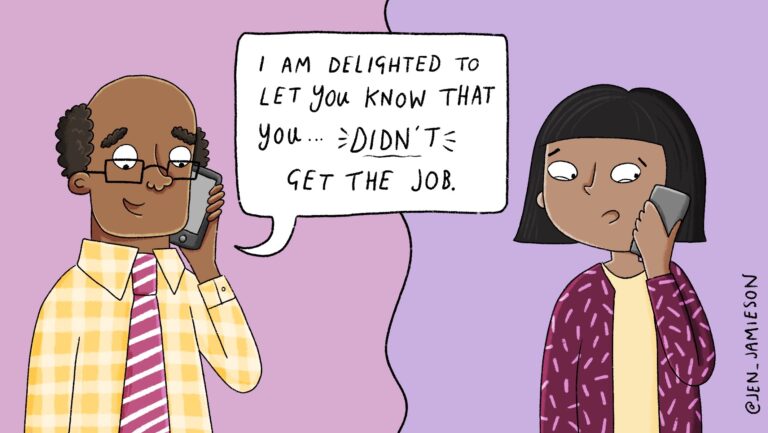I’ve been loosely following the development of artificial intelligence writing tools over the past few years. Originally the created texts were laughably awkward and incoherent, like in 2006 when we were translating things out of English and back again on Google Translate.
But over the past few weeks, I’ve seen examples of AI writing models that scare me. Take this example from Hello Teacher Lady. She asked ChatGPT, a type of artificial intelligence created by OpenAI, to write a poem about digital citizenship. Here’s what it came up with in under a minute:

GULP.
I decided to try the text-to-command feature with an age-old question of my own:

We both know that’s not true, robot.
Humor aside, there are negative implications for this kind of technology in the classroom. Luckily, there are ways it can be used to enhance learning and make teachers’ lives easier too.
The Downsides of AI Writing Tools
1. Cheating
The first thing on many teachers’ minds is how they can assign any writing on a computer when technology this advanced can do it for students in minutes. It brings up a lot of potential complications, especially in online classes.
2. Threats to authentic learning
When evidence of learning can be easily forged, how will teachers know what their students can and can’t do? Some teachers may respond by getting rid of technology altogether, while others may continue to assign outside writing and not care whether students learn. Both scenarios would hurt students.
3. They can be manipulated to spread harmful content
With AI able to write convincing articles at the drop of a hat, all it takes is someone manipulating AI to skew in favor of their existing opinions, completely fake news, or malicious worldviews. A large volume of AI-written articles could make a movement appear to have a ton of “research” and “information” supporting it.
Probably the scariest thing to me is thinking about the writing that can be generated that will make people believe harmful, untrue, and dangerous things about each other—especially about groups that are already marginalized. AI has already been trained to create social media posts to sway public opinion. Now they can be manipulated further to interact with other commenters.
Luckily, there are upsides to AI writing assistants as well. I’m grateful for the work of level-headed teachers out there like Shana Ramin pointing us in helpful and hopeful directions as we get to know this new frontier.
The Benefits of AI Writing Tools
1. It gives us an opportunity to reassess student learning.
What else could student learning look like besides a term essay or other long-form writing? Instead of written paragraphs, could writing responses sometimes be verbal or in the form of a class discussion? Sometimes roadblocks lead us to improving our practices.
2. We can make a much-needed return to some solid teaching practices of the past.
Using primary sources in research. Writing by hand. Peer review. Socratic seminars. We’ve lost touch with a lot of really great teaching practices that teachers relied on before classroom technology was commonplace.
3. AI can be trained to reject inappropriate requests.
In the same way that AI can be trained for harm, it can also be trained for good. ChatGPT, the artificial intelligence I mentioned in the intro, can reject inappropriate requests for a number of reasons.
4. AI can engage and educate students in a variety of ways.
Teachers can use ChatGPT, a large language model trained by OpenAI, in the classroom to engage and educate students in a variety of ways. Here are a few ideas:
- As a writing prompt generator: ChatGPT can help teachers generate engaging writing prompts for students to respond to. For example, a teacher could ask ChatGPT to generate a story starter or a creative writing prompt, and then have students use the prompt as the basis for their own writing. This can be a fun and interactive way to get students excited about writing.
- As a reading comprehension tool: ChatGPT can be used to help students improve their reading comprehension skills. Teachers can ask ChatGPT to generate a passage on a topic that students are studying, and then have students read the passage and answer questions about it. This can be a helpful way to assess students’ understanding of the material and to identify areas where they may need additional support.
- As a vocabulary builder: ChatGPT can help students expand their vocabulary by generating sentences using words that students may not be familiar with. Teachers can ask ChatGPT to generate sentences using a particular word, and then have students guess the meaning of the word based on the context of the sentence. This can be a fun and interactive way to help students learn new words and improve their vocabulary.
Overall, ChatGPT can be a valuable tool for teachers looking to engage and educate their students in new and exciting ways. By using ChatGPT in the classroom, teachers can help students develop important skills such as writing, reading comprehension, and vocabulary building.
Oh yeah, and #4 that you just read?
All written by artificial intelligence.
Spooky, huh?
What are your thoughts on AI writing tools? Let us know in the comments.
Looking for more articles like this? Be sure to subscribe to our newsletters!


